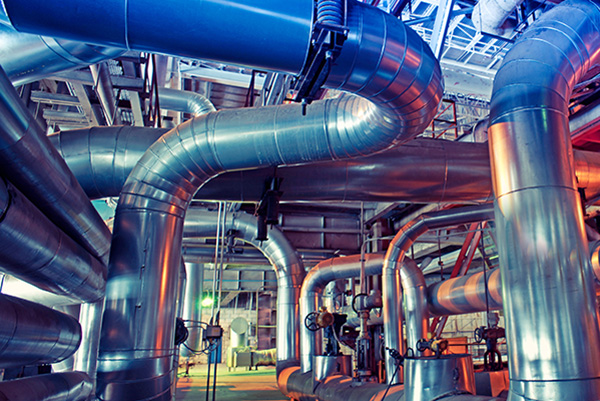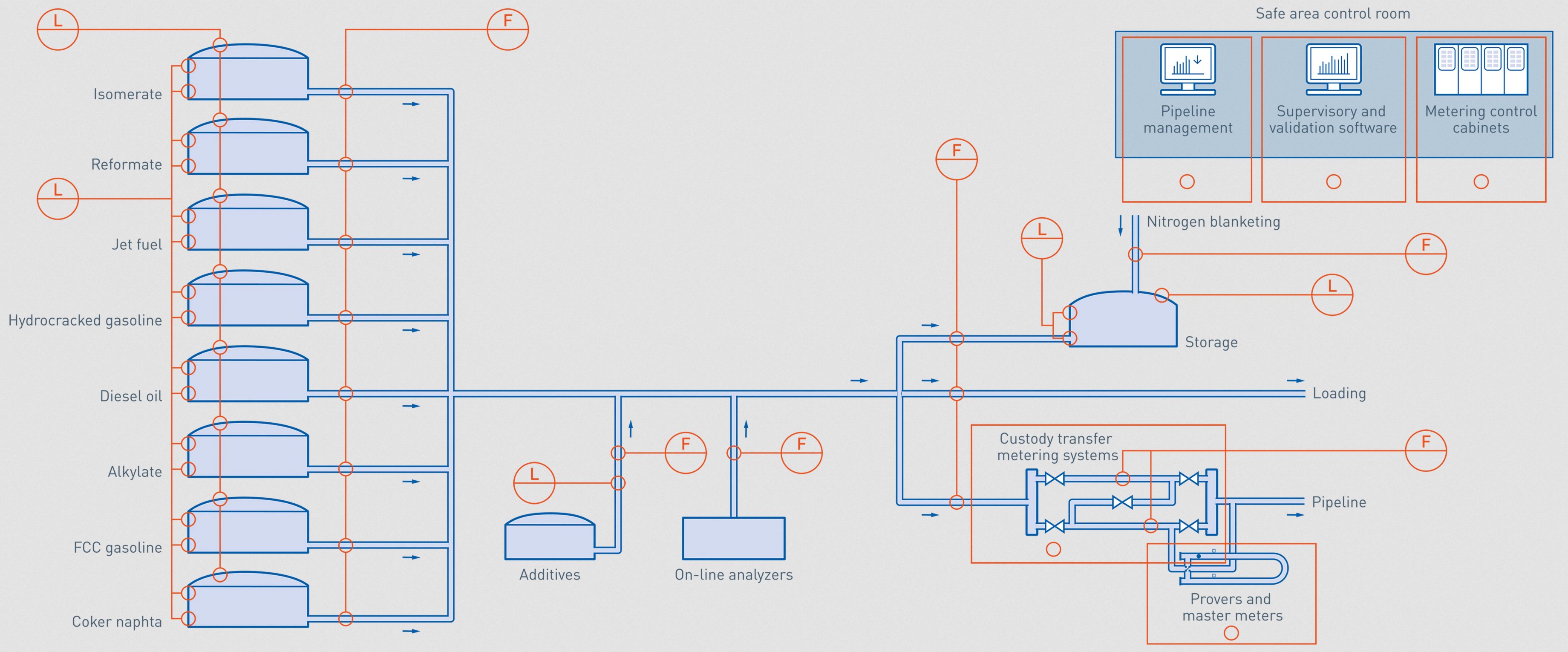Fuel blending in the refinery
Fuel blending is a critical process in the refining and petrochemical industries, involving the combinacrudetion of various petroleum products to create a final product that meets specific specifications and standards.
Gasoline, diesel, kerosene, lube oil, and fuel oil are the main blended products of the refinery:[1]
- Gasoline used in cars and small vehicles is blended with tank-to-tank in-line blending using naphtha, butane, alkylates, and isopentane to make fuels.
- Diesel, also known as middle distillate, is blended by rundown-to-tank and tank-to-tank in-line blending with the help of CDU middle distillates and hydrocracking streams. It results in light middle distillate for widespread use in marine diesel and heavy distillate fuel.
- Kerosene blending is done by rundown-to-tank in-line blending with the help of CDU kerosene, hydrocracker kerosene, and light diesel.
- Naphtha blending helps in producing constant densities in feed tanks. Light naphtha may be derived from various sources such as fractionation from NGL (natural gasoline), crude oil distillation, etc. In addition, light naphtha and gasoline are blended directly.
- Ships, boilers, and furnaces use fuel oil that is blended by tank-to-tank in-line blending.
- Lube oils, which are used by vehicles and machines, are blended by tank-to-tank in-line blending with the help of refined base oils, synthetic base oils, and additives.
Types of Fuel Blending Technologies
Different blending technologies are employed:[2]
- In-line blending
This method involves injecting proportionate amounts of each component into the main stream, where turbulence promotes thorough mixing.
- Batch tank blending
This method involves storing each component in separate tanks and then blending them together in a batch tank.
- Stationary batch tank lube in-line blending
This method involves blending lubricating oils in a stationary batch tank and then pumping the blended oil into a pipeline for further processing.
- Moving batch tank lube in-line blending
This method involves blending lubricating oils in a moving batch tank and then pumping the blended oil into a pipeline for further processing.
Best Practices for Refinery Blending
Following best practices apply to fuel blending:[3]
- Linear programming
Many refiners employ linear programming to rapidly select an optimal blend solution from a multitude of feasible alternatives.
- Real-time adjustments
Refiners often make last-minute changes to shipping schedules or production qualities, requiring reblending or substitution of high-quality components.
- Advanced optimization tools
Some refiners use specialized software to simultaneously optimize multi-period blends and reduce off-spec blends and quality giveaway.
Gasoline blending
Gasoline blending is much more complicated than a simple mixing of components. First, a typical refinery may have as many as 8 to 15 different hydrocarbon streams to consider as blend stocks. These may range from butane, the most volatile component, to a heavy naphtha and include several gasoline naphthas from crude distillation, catalytic cracking, and thermal processing units in addition to alkylate, polymer, and reformate.[4]
Modern gasoline may be blended to meet simultaneously 10 to 15 different quality specifications, such as vapour pressure; initial, intermediate, and final boiling points; sulfur content; colour; stability; aromatics content; olefin content; octane measurements for several different portions of the blend; and other local governmental or market restrictions.[4]
For the refinery owners, the goal during blending is to meet the minimum specifications required, for the lowest costs. Exceeding the specification usually means too much of the expensive, high-end components have been used. On the other hand, not meeting the specification means a batch might have to be sold as a lower grade product, at less value.[5]
The two properties of major importance are:[5]
- the octane number (indicating how much compression the fuel can withstand before self-igniting)
- the Reid Vapour Pressure or RVP (indicating the volatility of the product). The RVP may vary between seasons, as the products will be less volatile in winter, when it is colder.
References
- Fuel Blending Operations in a Refinery, OMS eLearning Academy. (Accessed 14th Nov 2024)
- 14th Nov 2024, Fuel Blending Operations, Brave search summarizer.
- 14th Nov 2024, Refinery Blending Stock, Brave search summarizer.
- Gasoline blending, Britannica. (Accessed 14th Nov 2024)
- Gasoline blending in the oil & gas industry, KHRONE. (Accessed 14th Nov 2024)









